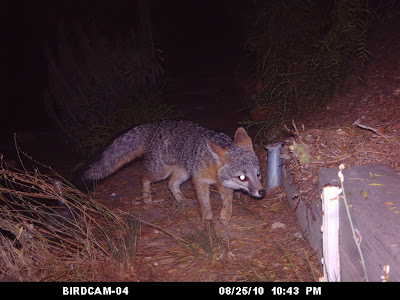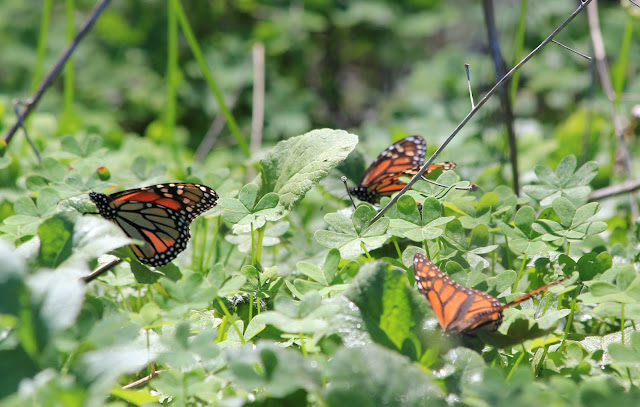Okay so this isn't in the garden but there are birds! Here are some pictures that I took on my visit to Islas Ballestas, Peru also known as the Poor Man's Galapagos. This was a day excursion on a 15 day South American Cruise aboard the Star Princess. We boarded the ship in Valparaiso Chile, and sailed up the Pacific coast stopping in Chile, Peru, Ecuador, Panama, Costa Rica and Mexico.
The Islas Ballestas are in Southern Peru a few miles off the coast near the town of Paracas Peru. The coast line is desert that receives almost no rainfall. You will notice that there isn't any vegetation. The marine bird and marine mammal populations are fed by the Humboldt Current which is abundant with fish except during El Nino conditions.
Here are the small boats we took out to the islands.
On the way to the islands we saw thousands of Peruvian Pelicans. They are bigger than the Brown Pelicans of Southern California.
 |
| Peruvian Pelicans |
 |
| Peruvian Pelicans |
 |
| Peruvian Pelicans |
Also on our way to the islands we could see Candelabra the geoglyph carved into the hillside, like the Nazca lines.
The boats go around the islands and get close to shore but don't dock as you are not allowed onto the island.
 |
| Peruvian Boobies |
Here are some Peruvian Boobies, they do not have the blue feet found on the Boobies of the Galapagos Islands.
 |
| Peruvian Booby |
The Ballestas Islands were once the source of great wealth for the national economy, due to the vast quantities (literally several yards deep) of bird droppings. Built up over centuries, this nutrient-rich substance, used as excellent fertilizer and a key ingredient in the manufacture of explosives, was collected with fervor and exported throughout the world during the early nineteenth century.
The development of artificial fertilizers at the end of the 19th century ultimately led to a sharp fall in the worth of this unexpected gift from nature, and today the islands’ treasure is harvested on a much smaller scale, primarily for national agricultural use, and confined to defined periods of the year.
 |
| Here are some local fisherman. |
 |
| Humboldt Penguins, Guanay Cormorants and Gulls. |
 |
| Humboldt Penguins |
 |
| Guanay Cormorant |
 |
| Inca Terns |
 |
| Inca Tern |
 |
| Inca Tern |
 |
| Inca Terns and Peruvian Boobies |
 |
| Humboldt Penguin |
 |
| Humboldt Penguins |
The rough looking penguin (third from the right) is a young adult loosing its juvenile feathers.
 |
| Sea Lion |
 |
| Sea Lions |
 |
| Sea Lions |
 |
| Sea Lion |
 |
| It's a Sea Lion hot tub! |
 |
| Sea Lion Coloney |
 |
| A sea lion pup swims up to check us out. | | | | | |
Here is a panoramic of a Sea Lion Colony. Click on it for a larger view.
One last view of Candelabra on our way back to shore.
We saw clouds of gulls on our way back to land.






































































